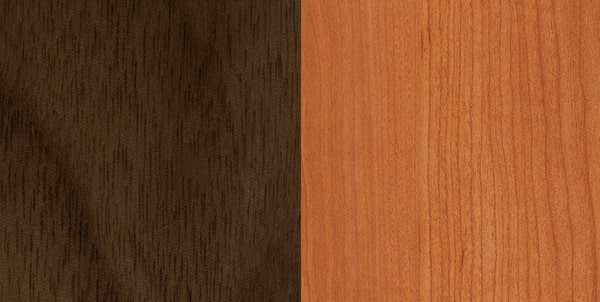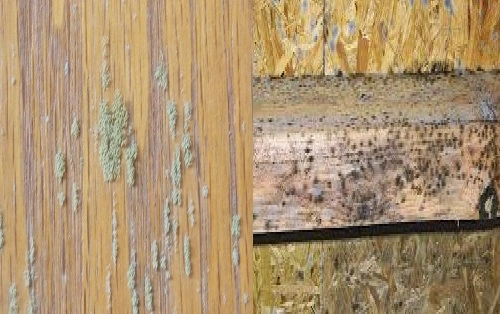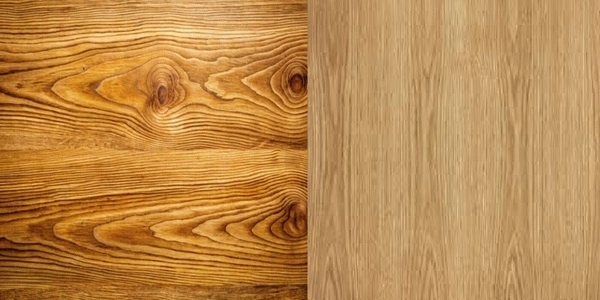When it comes to high-quality hardwoods for furniture, cabinetry, and interior design, walnut and cherry wood are two of the most popular choices. Both woods are prized for their beauty, durability, and versatility, but they differ significantly in terms of color, grain, workability, and cost. Understanding these differences can help you choose the perfect wood for your next project.
This article provides an in-depth comparison of walnut and cherry wood, exploring their characteristics, benefits, drawbacks, and best applications.
What is Walnut Wood?
Walnut wood primarily comes from the black walnut tree, which is native to North America. It is a dense hardwood known for its rich, dark color and fine grain, making it a popular choice for high-end furniture and woodworking projects.
Key Characteristics of Walnut Wood:
Color: Walnut is known for its deep chocolate-brown color, often with purplish or reddish undertones. Its sapwood is lighter, ranging from creamy white to pale yellow.
Grain: The grain of walnut wood is typically straight but can also feature wavy or curly patterns, adding a unique touch to furniture and décor.
Durability: Walnut is a hard, dense wood with excellent resistance to wear and impact, making it ideal for furniture that will see daily use.
Workability: Walnut is easy to work with, whether cutting, sanding, or finishing, and it takes stains and oils beautifully.
What is Cherry Wood?
Cherry wood comes from the American black cherry tree, which is also native to North America. It is a versatile hardwood known for its smooth grain and warm, reddish hues.
Key Characteristics of Cherry Wood:
Color: Cherry wood starts as a light pinkish-brown color and deepens to a rich reddish-brown over time. This natural aging process, or patina, is one of cherry’s most desirable features.
Grain: The grain of cherry wood is fine, straight, and uniform, with occasional curly or wavy patterns that enhance its natural beauty.
Durability: While not as hard as walnut, cherry is still a durable hardwood suitable for most furniture and cabinetry.
Workability: Cherry wood is highly workable and responds well to cutting, sanding, and finishing.
Comparison of Walnut and Cherry Wood
| Feature | Walnut Wood | Cherry Wood |
|---|---|---|
| Color | Deep chocolate brown with purplish undertones | Light pinkish-brown that darkens to reddish-brown |
| Grain | Straight to wavy with a fine texture | Straight and smooth, with occasional wavy patterns |
| Durability | Hard, dense, and highly resistant to wear | Moderately durable, less hard than walnut |
| Workability | Easy to work with, takes finishes well | Easy to work with, known for its smooth finishes |
| Aging | Retains its color over time | Develops a rich patina, darkening with age |
| Cost | More expensive due to limited availability | Mid-range cost, more affordable than walnut |
| Common Uses | High-end furniture, cabinetry, and veneers | Furniture, cabinetry, and decorative items |
Advantages of Walnut Wood
Rich Color: Walnut’s deep, dark tones give furniture a sophisticated and timeless look.
Durability: Its hardness and density make walnut ideal for high-use furniture like dining tables and desks.
Unique Grain Patterns: Walnut’s occasional wavy or curly grain adds character and elegance to any piece.
Minimal Aging: Walnut retains its original color better than cherry, making it a good choice for designs that require consistency over time.
Drawbacks of Walnut Wood:
Higher Cost: Walnut is one of the more expensive hardwoods due to its limited availability.
Lighter Sapwood: The contrast between walnut’s dark heartwood and light sapwood can require careful selection for consistent coloring.
Advantages of Cherry Wood
Natural Warmth: Cherry wood’s rich, warm tones bring a sense of coziness and elegance to any space.
Aging Gracefully: Its ability to develop a patina over time enhances its beauty, making it a favorite for heirloom-quality furniture.
Versatility: Cherry wood is suitable for a wide range of furniture styles, from traditional to modern.
Affordability: While still considered a premium hardwood, cherry wood is typically more affordable than walnut.
Drawbacks of Cherry Wood:
Softness: Cherry is softer than walnut and more prone to dents and scratches.
Color Variability: Its light initial color can take years to darken, and it may not suit projects requiring immediate uniformity.
Best Uses for Walnut Wood
1. High-End Furniture: Dining tables, desks, and headboards benefit from walnut’s luxurious look and durability.
2. Cabinetry: Walnut is often used in custom kitchen cabinets and fine woodworking projects.
3. Decorative Items: Its dark tones make it ideal for veneers, picture frames, and small accent pieces.
Best Uses for Cherry Wood
1. Furniture: Cherry is a top choice for bedroom and living room furniture, such as dressers, coffee tables, and chairs.
2. Cabinetry: Its smooth finish and warm color make cherry perfect for kitchen and bathroom cabinets.
3. Trim and Moldings: Cherry’s fine grain is ideal for intricate trim work and paneling.
Cost Comparison
1. Walnut Wood: Walnut is more expensive, typically costing $10–$15 per board foot. The high price reflects its premium status and limited availability.
2. Cherry Wood: Cherry is more affordable, with prices ranging from $6–$10 per board foot. Its accessibility makes it a cost-effective option for many projects.
Which Should You Choose?
Your choice between walnut and cherry wood depends on your priorities:
- Choose Walnut If:
- You want a luxurious, dark-toned wood with high durability.
- Your project requires a wood that retains its color over time.
- You’re creating high-end furniture or cabinetry.
- Choose Cherry If:
- You prefer a warm, natural look that develops a rich patina.
- You want a versatile, mid-priced hardwood for furniture or trim.
- You value a smooth, fine grain for a polished finish.
Conclusion
Both walnut and cherry wood are exceptional choices for furniture and home design, offering unique strengths and aesthetics. Walnut stands out for its rich, dark tones and durability, making it ideal for high-end, timeless pieces. Cherry, on the other hand, is prized for its warm hues, smooth grain, and ability to age beautifully, making it perfect for versatile, elegant designs.
Ultimately, your decision should align with your style preferences, budget, and the specific requirements of your project. Whether you choose walnut or cherry, you’ll be investing in a hardwood that adds beauty, functionality, and value to your home


